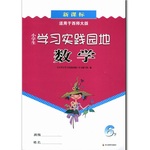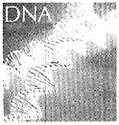题目内容
When my kids were small, I started a tradition in our house of giving eight gifts over the course of the eight days of Hanukkah(光明节). I liked the idea of_________a candle every night and giving my children a gift to unwrap to _______. It was easy to go into a toy store and pick up something _______less than $10 each, or even $1 each (at the Dollar Store). My children didn't ask for anything much in particular and they _______whatever they got.
As the years progressed, I _______the tradition of eight gifts for each night of Hanukkah.
But this year, Hanukkah _______something else. My special-needs son decided that he wanted to _______a computer, and it was up to me to buy all the parts of it. When I wouldn't _______that, he decided he wanted a PlayStation. Then Amazon gift cards. Then money. And it became clear that it wasn't going to happen, he got _______.
I keep________him that Hanukkah isn't about greed or materialism. It's about the miracle of an oil lamp that ________for eight days. It's about being________of our heritage. It's about freedom.
But he ________. I know deep down that his obsessions(迷恋) are out of his ________, and definitely out of mine. Having a special-needs child is as________as it gets. Some days are better than others and not all holidays________the way I hope. But despite his unrealistic requests, he's a(n) ________child who is showing me the true meaning of life.
And as we enter a new year and light the ________approaching the time, I welcome his differences ________I learn how to turn negative requests into________ones.
1.A. buying B. donating C. lighting D. drawing
2.A. celebrate B. present C. send D. play
3.A. with B. for C. of D. from
4.A. ate B. threw C. liked D. drank
5.A. held up B. gave in C. handed in D. kept up
6.A. made B. became C. found D. designed
7.A. build B. buy C. use D. watch
8.A. rely on B. learn from C. agree to D. dream about
9.A. calm B. happy C. selfish D. upset
10.A. telling B. warning C. promising D. accusing
11.A. lays B. hangs C. waits D. burns
12.A. tired B. proud C. afraid D. lack
13.A. nodded B. slept C. insisted D. failed
14.A. mind B. sight C. control D. place
15.A. wonderful B. dangerous C. interesting D. challenging
16.A. run out B. break down C. work out D. put down
17.A. strange B. amazing C. bad D. energetic
18.A. candles B. lamps C. torches D. lanterns
19.A. when B. as C. unless D. until
20.A. relative B. possible C. reasonable D. positive
 学习实践园地系列答案
学习实践园地系列答案

 e part in. Only athletes who have reached the agreeing standard for their events will be admitted into competitors.
e part in. Only athletes who have reached the agreeing standard for their events will be admitted into competitors. two live in the same place and eat the same food. But North American lobsters are larger, stronger and more aggressive (好斗的) than European lobsters, and they produce young more quickly.
two live in the same place and eat the same food. But North American lobsters are larger, stronger and more aggressive (好斗的) than European lobsters, and they produce young more quickly.



 DNA(Deoxyribonucleic acid)is one of the most important discoveries in science. DNA is the plan for the human being,as a blueprint is the plan for building. DNA makes a person look the way he does. A person’s DNA comes from a mixing of his parents’ DNA. That’s why a child looks like his parents. But,besides controlling things such as height and hair color,DNA can also give people diseases. Scientists are now studying DNA to cure(治疗) diseases.
DNA(Deoxyribonucleic acid)is one of the most important discoveries in science. DNA is the plan for the human being,as a blueprint is the plan for building. DNA makes a person look the way he does. A person’s DNA comes from a mixing of his parents’ DNA. That’s why a child looks like his parents. But,besides controlling things such as height and hair color,DNA can also give people diseases. Scientists are now studying DNA to cure(治疗) diseases.  create many problems.
create many problems. of DNA Research in Japan
of DNA Research in Japan